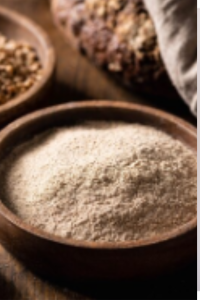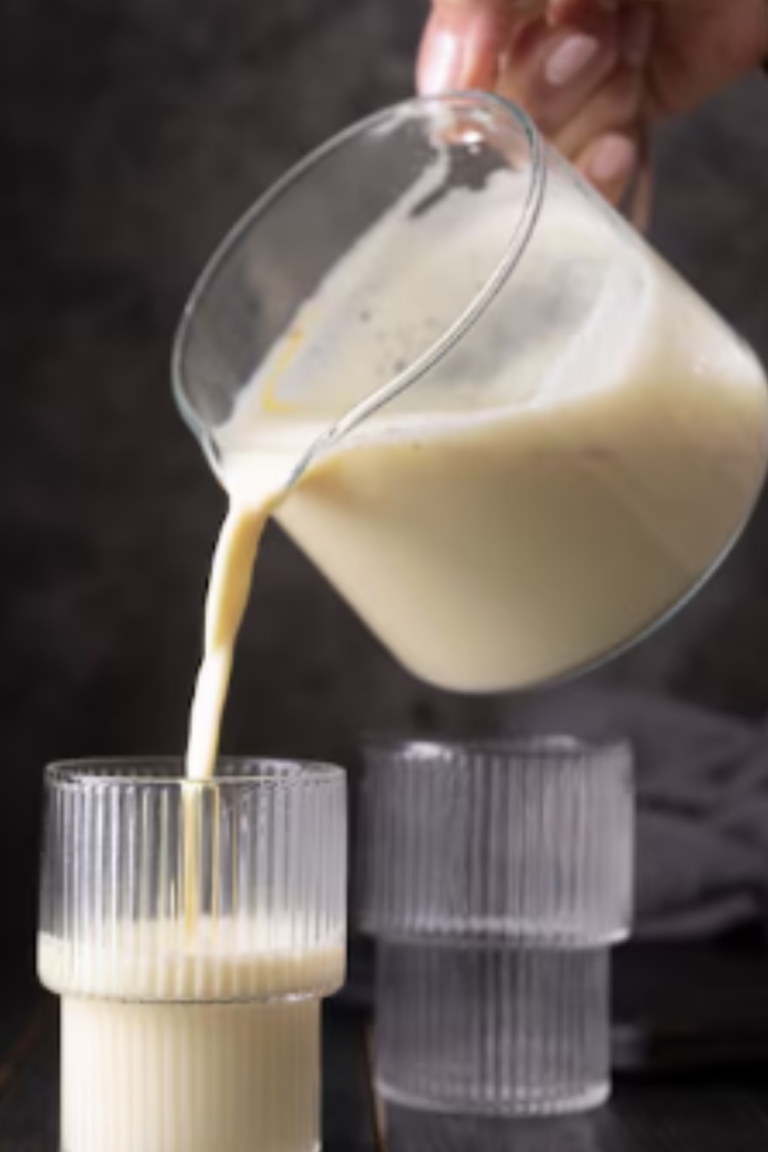HSF: High-Protein Soy Flour role in cakes Explained
Table of Contents
ToggleWhat is High-Protein Soy Flour (HSF)?
High-Protein Soy Flour (HSF) is a versatile ingredient derived from soybeans. It’s made by grinding soybeans into a fine powder after removing the oil. This process concentrates the protein content, making it an excellent source of plant-based protein for various food applications. Check out the right High-Protein Soy Flour, cake tools, and ingredients that you need here.

its Role in Cakes
When it comes to baking, HSF plays a crucial role in enhancing the nutritional profile of cakes without compromising on taste or texture. Here’s how it contributes to the baking process and the final product:
Enhancing Nutritional Value
HSF is renowned for its high protein content, typically around 50% protein by weight. This makes it a valuable addition for those looking to boost the protein content of their baked goods, whether for personal health reasons or dietary preferences.
Improving Texture
In cakes, HSF acts as a functional ingredient that helps improve the structure and texture. Its fine texture blends well with other dry ingredients, ensuring a smooth batter consistency. This results in cakes that are moist, tender, and have a finer crumb texture. Check out the right High-Protein Soy Flour, cake tools, and ingredients that you need here.
Binding Properties
Due to its protein content, HSF also serves as a binder in cakes. It helps hold ingredients together, which is particularly beneficial in recipes where eggs or other binding agents are limited or absent.
Adding Moisture
Soy flour, including HSF, has natural oils that contribute to moisture retention in baked goods. This means cakes made with HSF tend to stay fresher for longer periods, maintaining their softness and flavor.
Tips for Using HSF in Cakes
- Substitution Ratio: When substituting all-purpose flour with HSF, start by replacing up to 25% of the flour content. This maintains the cake’s texture while increasing its protein content.
- Adjusting Liquid: HSF absorbs more liquid than regular flour, so adjust the liquid ingredients slightly to achieve the desired batter consistency.
- Flavor Considerations: HSF has a subtle nutty flavor that complements many cake recipes. Experiment with different flavor profiles to enhance your cakes.
incorporating High-Protein Soy Flour into your cake recipes not only boosts their nutritional value but also enhances their texture and moisture content. Whether you’re baking for health-conscious reasons or simply love experimenting with new ingredients, HSF is a versatile addition to your pantry. Try it out in your next baking adventure and enjoy the benefits it brings to your homemade cakes. Check out the right High-Protein Soy Flour, cake tools, and ingredients that you need here.
Drilling Deeper: Comparing High-Protein Soy Flour with Other Flours
When considering the use of High-Protein Soy Flour (HSF) in baking, it’s valuable to compare it with other types of flours commonly used in cakes. Understanding these comparisons can help you make informed decisions about ingredient choices and their impact on your baked goods.
Nutritional Benefits
HSF vs. All-Purpose Flour:
- Protein Content: HSF significantly surpasses all-purpose flour in protein content. While all-purpose flour contains about 10-12% protein, HSF boasts approximately 50% protein by weight.
- Fiber and Nutrients: HSF also offers higher levels of fiber and essential nutrients compared to refined all-purpose flour, making it a nutritionally denser choice.
HSF vs. Almond Flour:
- Protein and Fat Content: Almond flour is known for its higher fat content and moderate protein levels. While almond flour provides healthy fats, HSF provides more protein per serving.
- Gluten-Free Considerations: Almond flour is naturally gluten-free, making it suitable for those with gluten sensitivities. HSF, although not gluten-free, offers a different nutritional profile and baking properties. Check out the right High-Protein Soy Flour, cake tools, and ingredients that you need here.
Baking Properties
HSF vs. Whole Wheat Flour:
- Texture and Flavor: Whole wheat flour lends a denser texture and nuttier flavor to cakes compared to HSF. HSF, with its finer texture and neutral taste, allows for a lighter cake texture while boosting protein content.
- Gluten Content: Whole wheat flour contains gluten, whereas HSF does not. This makes HSF a suitable choice for individuals looking to reduce gluten intake.
HSF vs. Coconut Flour:
- Absorption and Texture: Coconut flour absorbs more liquid than HSF and tends to create denser, more fibrous cakes. HSF offers a smoother texture and better moisture retention without the distinct coconut flavor. Check out the right High-Protein Soy Flour, cake tools, and ingredients that you need here.
Practical Tips for Incorporation
When substituting HSF for other flours in cake recipes, consider the following tips:
- Experimentation: Begin by replacing a portion of the flour in your recipe with HSF and adjust based on your desired texture and nutritional goals.
- Liquid Adjustment: Due to its higher absorption rate, HSF may require slight adjustments in the liquid content of your recipe. Monitor batter consistency closely.
- Flavor Enhancement: HSF’s mild flavor allows it to blend seamlessly with various cake flavors. Enhance the taste profile by incorporating complementary ingredients like vanilla extract, spices, or citrus zest.
Comparison Table: High-Protein Soy Flour (HSF) vs. Other Flours in Cakes
| Aspect | High-Protein Soy Flour (HSF) | All-Purpose Flour | Almond Flour | Whole Wheat Flour | Coconut Flour |
|---|---|---|---|---|---|
| Protein Content | High (about 50% protein by weight) | Low (about 10-12% protein by weight) | Moderate (lower than HSF) | Moderate (higher than all-purpose) | Moderate (lower than HSF) |
| Gluten Content | Gluten-free (suitable for gluten-free diets) | Contains gluten | Gluten-free (suitable for gluten-free diets) | Contains gluten | Gluten-free (suitable for gluten-free diets) |
| Fiber Content | Moderate to high | Low | Moderate | High | High |
| Fat Content | Low | Low | High | Low | Low |
| Flavor Profile | Neutral | Neutral | Nutty | Nutty, slightly bitter | Mildly sweet, coconut flavor |
| Texture in Cakes | Fine texture, smooth crumb | Soft, tender crumb | Dense, slightly gritty | Dense, nutty | Dense, fibrous |
| Moisture Retention | Good | Good | Moderate | Moderate | High |
| Baking Properties | Enhances structure and texture | Standard baking properties | Adds moisture, alters texture | Adds density, alters flavor | Absorbs more liquid, alters texture |
| Nutritional Benefits | High protein, fiber, and nutrients | Basic nutritional profile | Protein and healthy fats | High fiber, vitamins, minerals | High fiber, healthy fats, minerals |
| Suitability for Diets | Suitable for high-protein, gluten-free diets | Suitable for general baking | Suitable for gluten-free, higher fat diets | Suitable for those seeking whole grain options | Suitable for gluten-free, high fiber diets |
Key Notes and Considerations
- Protein Content: HSF stands out with its exceptionally high protein content, making it ideal for boosting protein intake in baked goods.
- Gluten Considerations: HSF is gluten-free, suitable for those with gluten sensitivities, while all-purpose and whole wheat flours contain gluten.
- Texture and Moisture: HSF contributes to a finer texture and good moisture retention in cakes, whereas coconut flour absorbs more liquid, affecting texture.
- Nutritional Profile: HSF offers a balanced nutritional profile with high protein and fiber, while almond and coconut flours provide healthy fats and unique flavors.
- Baking Properties: Each flour type alters the texture and structure of cakes differently, offering varied options for taste and dietary preferences. Check out the right High-Protein Soy Flour, cake tools, and ingredients that you need here.
FAQs about High-Protein Soy Flour (HSF) in Cakes
What is High-Protein Soy Flour (HSF)?
HSF is a flour made from soybeans with a high concentration of protein, typically around 50% by weight after oil extraction. It’s used to enhance the nutritional profile of baked goods like cakes.
How does High-Protein Soy Flour benefit cakes?
HSF boosts the protein content of cakes, making them more nutritious. It also contributes to a finer texture, improved moisture retention, and can act as a binder in recipes.
Is High-Protein Soy Flour gluten-free?
Yes, HSF is naturally gluten-free, making it suitable for those with gluten sensitivities or celiac disease. It’s a viable alternative to wheat-based flours in gluten-free baking.
How can I incorporate High-Protein Soy Flour into my cake recipes?
Start by substituting a portion (up to 25%) of the all-purpose flour with HSF. Adjust the liquid ingredients slightly to achieve the desired batter consistency. Experiment with different flavors to complement HSF’s mild nutty taste.
Can High-Protein Soy Flour replace all-purpose flour completely in cakes?
While HSF can replace some of the all-purpose flour, it’s recommended to blend it with other flours for optimal texture and taste. Complete substitution may alter the cake’s texture significantly. Check out the right High-Protein Soy Flour, cake tools, and ingredients that you need here.
Final Words
Incorporating High-Protein Soy Flour into your cake baking not only enhances their nutritional value but also introduces unique baking properties. Whether you’re looking to increase protein intake, explore gluten-free alternatives, or simply experiment with new ingredients, HSF offers versatility and health benefits that elevate homemade cakes.
Explore the diverse possibilities of using HSF in your favorite cake recipes and enjoy the balanced flavors and textures it brings.

Hi!
I’m Mike, the creator of Forum Foodies. In my own personal experience, understanding ingredients is key to great cooking.
Forum Foodies offers guides on various ingredients, from staples to exotic finds. Join our community, share your experiences, and learn from fellow food lovers.
Have questions or suggestions? Email me at info@forumfoodies.com. Let’s embark on this delicious adventure together.
Happy cooking.
Mike/
Related Posts
- HPF: High-Protein Flour role in cakes Clarified
In this topic, I'm going to talk about High-Protein Flour (HPF) and its role in…
- BPSF: Banana Puree Soy Flour role in cakes Explained
In this topic, I'm going to talk about the role of Banana Puree Soy Flour…
- CCTF: Chocolate Cake Flour role in cakes Explained
In this topic, I'm going to talk about a crucial ingredient in baking: Chocolate Cake…
- AFS: Almond Flour Sponge role in cakes Clarified
In this topic, I'm going to talk about the role of almond flour sponge in…
- PFF: Pumpkin Fruit Flour its role in cakes Clarified
In this topic, I'm going to talk about Pumpkin Fruit Flour (PFF) in my own…
- CCFL: Corn Cream Flour role in cakes Clarified
In this topic, I'm going to talk about CCFL - Corn Cream Flour in my…
- GHF: Gluten-Free Hazelnut Flour role in cakes Explained
In this topic, I'm going to talk about gluten-free hazelnut flour and its role in…
- BGF: Buckwheat Grain Flour role in cakes Clarified
In this topic, I'm going to talk about the role of Buckwheat Grain Flour (BGF)…
- MSF: Millet Seed Flour role in cakes Explained
In this topic, I'm going to talk about the role of Millet Seed Flour (MSF)…
- CRF: Cashew Rice Flour role in cakes Clarified
In this topic, I'm going to talk about the role of CRF - Cashew Rice…
- NSF: Nutmeg Spice Flour role in cakes Clarified
In this topic, I'm going to talk about NSF - Nutmeg Spice Flour, based on…
- CFG: Corn Flour Gel role in cakes Explained
In this topic, I'm going to talk about Corn Flour Gel in my own personal…
- AFC: Almond Flour Cake its role in cakes Clarified
If you’re looking for a delicious and gluten-free cake option, you’re in the right place.…
- AFL: in cakes Clarified
In this topic, I'm going to talk about the role of almond flour in cakes,…
- DMF: Dry Milk Flour role in cakes Clarified
In this topic, I'm going to talk about DMF - Dry Milk Flour in my…





